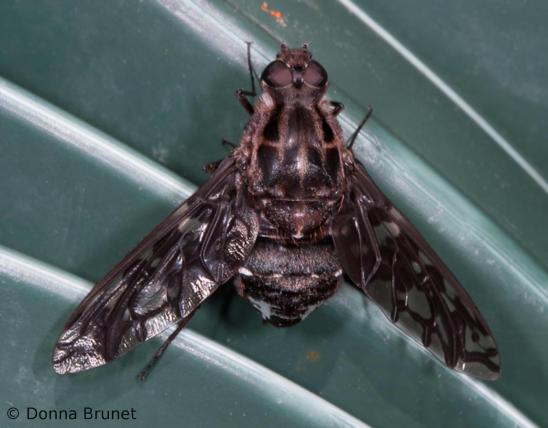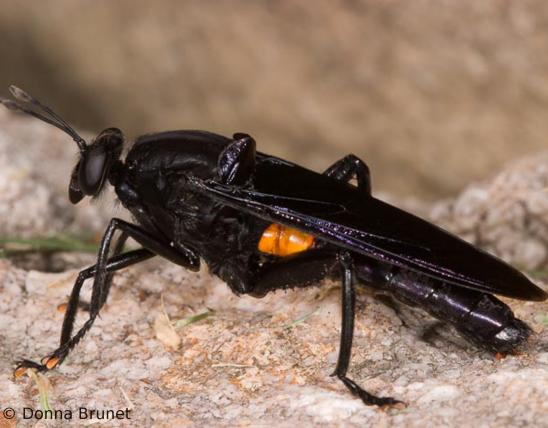
The tiger bee fly is one of about 800 species of bee flies in North America. It parasitizes the larvae of carpenter bees. Its wing markings are distinctive. Most people see this species hovering around wooden privacy fences, wooden roof overhangs, and similar wooden surfaces. The female tiger bee fly deposits her eggs in places where carpenter bees have laid their eggs. The bee fly larvae eat the carpenter bee larvae.
Bee flies are true flies and are not bees at all. Lacking the ability to sting or to bite, their bee mimicry helps them avoid many would-be predators.
Learn more about the tiger bee fly and other bee flies (family Bombyliidae) on their family page.
Length: about ¾ inch (not including wings or appendages)
Human Connections
Considering how unwelcome carpenter bees can be, since they bore holes into wooden objects such as porch railings and roof overhangs, the tiger bee fly is a friend.
Ecosystem Connections
Tiger bee flies rely on populations of their hosts (carpenter bees) to survive.




























